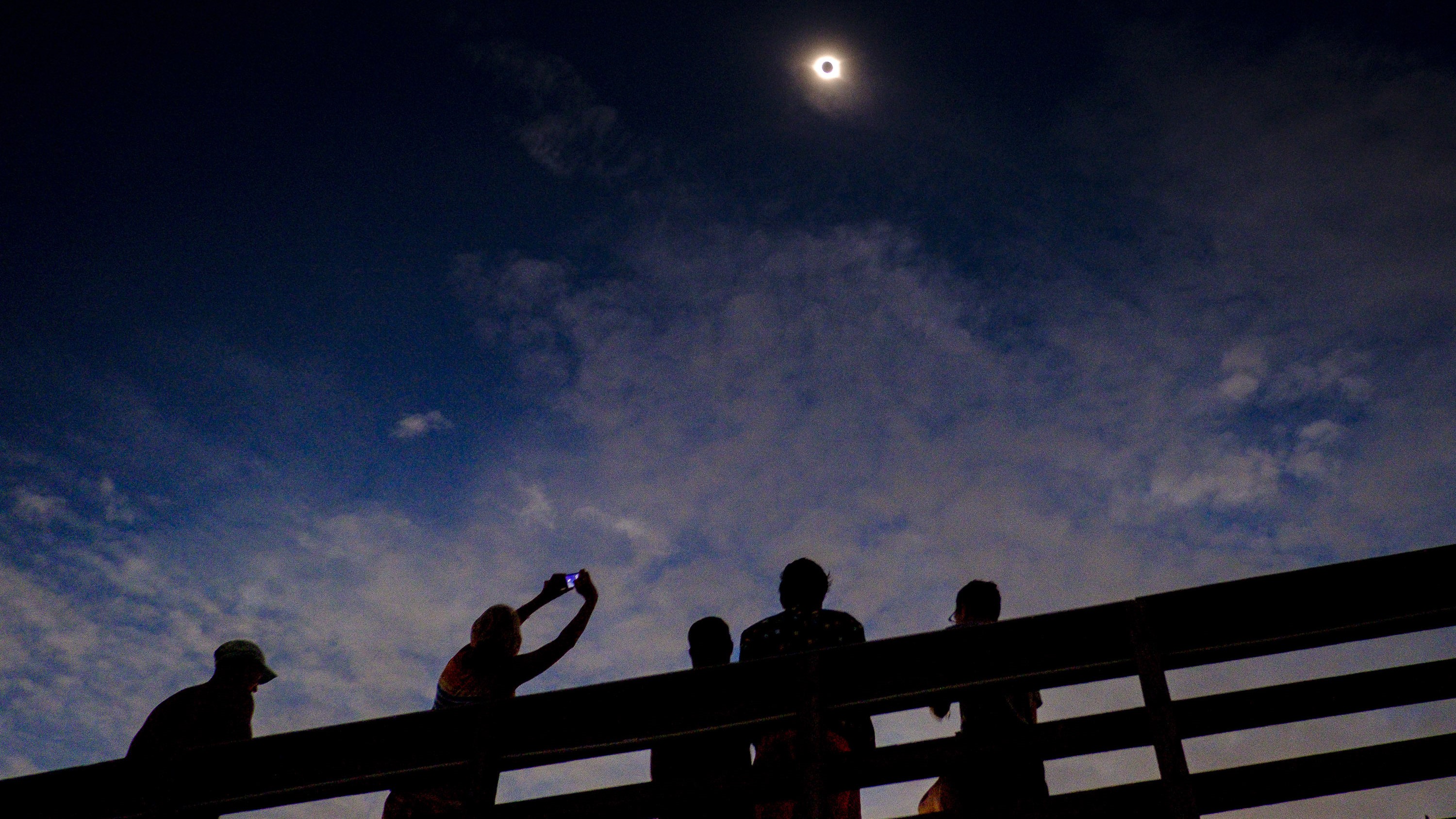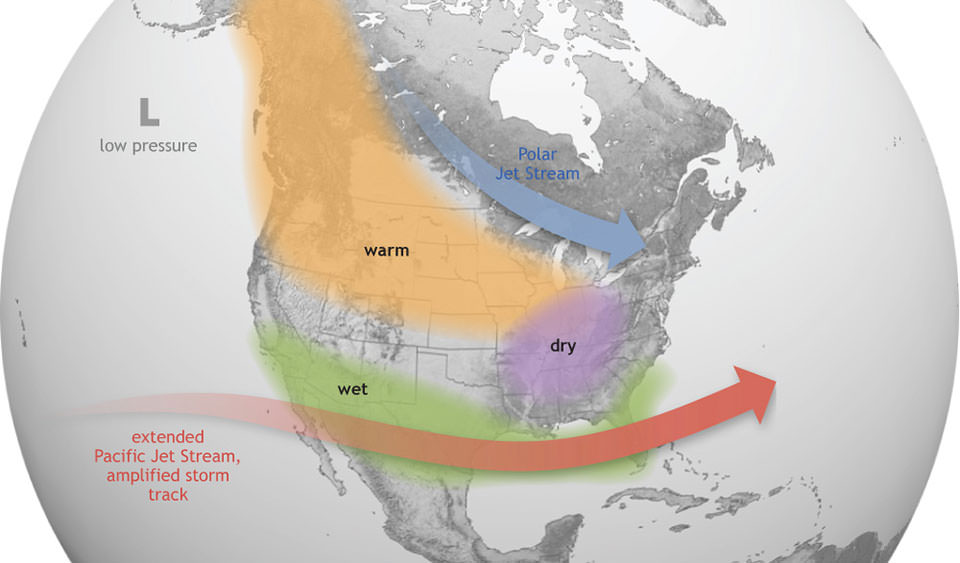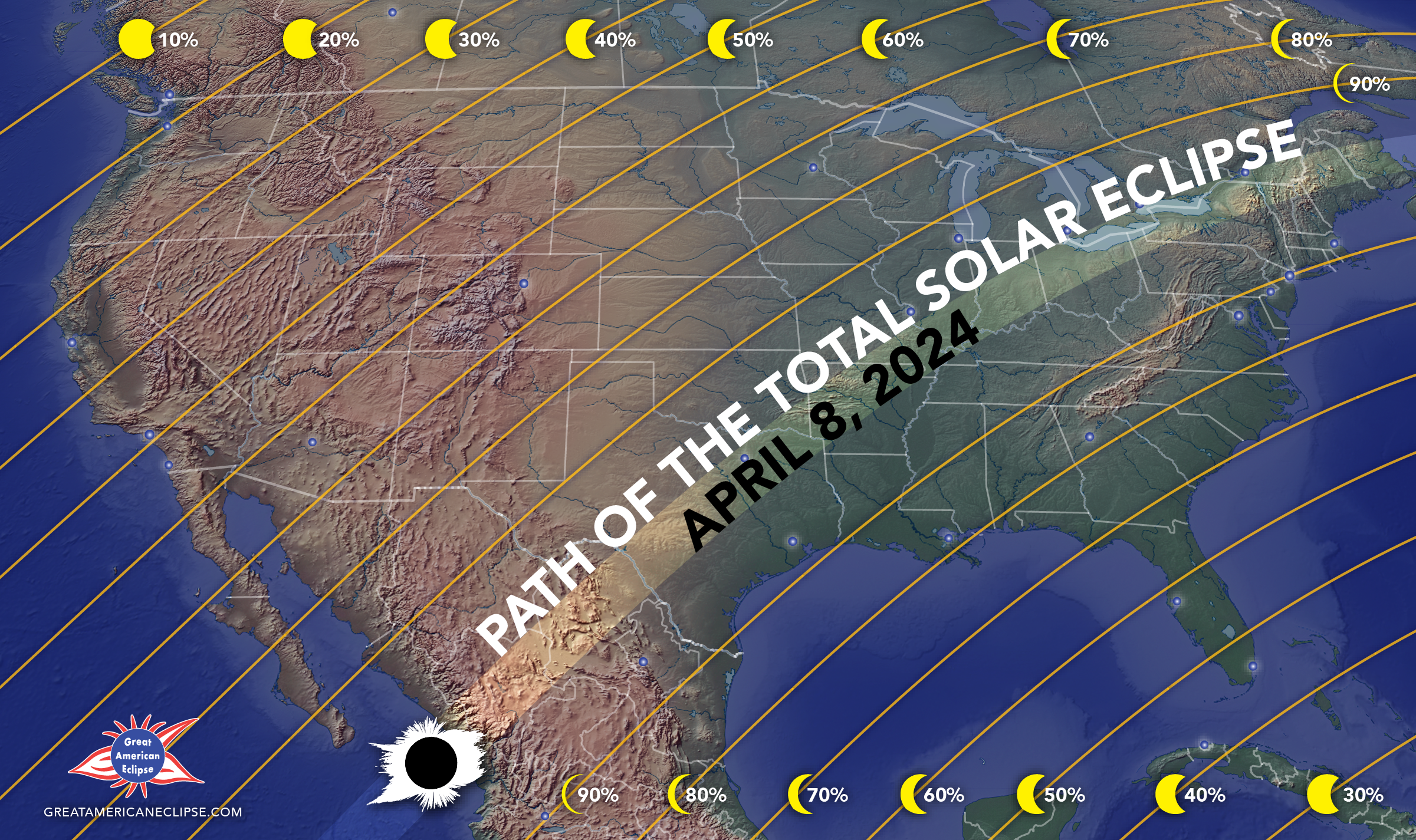
Where will the best weather be for the total solar eclipse on April 8, 2024? That's the burning question for eclipse chasers who are now making preparations and travel plans, but an incoming El Niño threatens to make things a little more complicated.
The climate pattern in the Pacific Ocean, which occurs every few years, is now 95% certain to remain active in the Northern Hemisphere from January through March, and the chances are 80% from March through May, according to the latest data from the National Oceanic and Atmospheric Administration's Climate Prediction Center.
Here's everything you need to know about how El Niño could affect the chances of a clear sky for the total solar eclipse.
Related: Total solar eclipse April 2024: 8 top tips for planning your trip
What is El Niño?
El Niño is a warming of ocean surface temperatures that occurs every two to seven years. "El Niño is an oscillation in the central Pacific Ocean that sees warm water being primarily located on the American side change to it being closer to Indonesia," Jon Hutchinson, a meteorologist at Southwest Airlines, which is planning special eclipse flights, told Space.com. "It changes the overall wind pattern that we see across the globe, and in the U.S., we tend to see a stronger jet stream over the southern portion and a milder jet stream over the northern portion."
That typically means wetter conditions in the South and drier weather in the North, Hutchinson said.
However, "Every El Niño is a little bit different," Josh Willis, project scientist for the U.S.-European Sentinel-6 Michael Freilich satellite at NASA's Jet Propulsion Laboratory in California, said in a statement. "This one seems modest compared to the big events, but it could still give us a wet winter here in the Southwest U.S. if conditions are right."

Climatology for the path of totality
The 115-mile-wide (185 kilometers) path of totality for the eclipse on April 8, 2024, begins on the Pacific coast of Mexico at Mazatlán and tracks northeast, crossing 15 U.S. states from Texas through Maine, as well as southern parts of Quebec and Ontario, before crossing into Canada's Maritime Provinces.
The standard climatology for this narrow band in non El Niño years suggests that the best chance of clear skies will occur in the southwestern part of the path — Mexico and Texas — with the probability of clear skies generally reducing the farther northeast you travel.
"In general, there is a steady increase in cloud cover from south to north," solar eclipse meteorologist Jay Anderson wrote on his website Eclipsophile before El Niño was predicted. However, he stressed that April is a month of transition across the continent, where thunderstorm season has begun in the South and spring storms and snowfall are possible in the North.
How El Niño predictions affect the path of totality

A big percentage of dedicated, climate-obsessed eclipse chasers from around the world will head to Mexico or Texas. Should El Niño change that? The big picture remains largely the same, and it could actually be good news for those planning to view the eclipse in the Southwest.
What El Niño potentially brings is more complexity, Anderson wrote in an article for Sky & Telescope. He crunched the data on cloud cover going back to 1979 and discovered a reduction of expected cloudiness of up to 15% in the same areas already favored by eclipse chasers — Mexico and Texas — but also through Oklahoma, Arkansas, Missouri and Illinois. Farther northeast, there was little difference in El Niño years.
"El Niño does make some difference overall, but I wouldn't change my plans for the eclipse," Hutchinson said. "Generally we should see about the same amount of storms in an El Niño year, but storm systems moving through the Texas area tend to be a lot bigger and more potent." If that's a worry, storms in Texas were already possible in April.
There's a large random element to all of this because meteorologists can't know for sure if this will be a strong or weak El Niño, either of which would make a considerable difference in the expected weather. What we do know is that, so far, El Niño shouldn't derail your eclipse plans.
We'll have to watch the forecasts in the few days before the total solar eclipse, which will be the last one to cross North America until 2045. As eclipse chasers often say, "Climate is what you expect, and weather is what you get." For millions of people, April 8 looks to be a real nail-biter.







